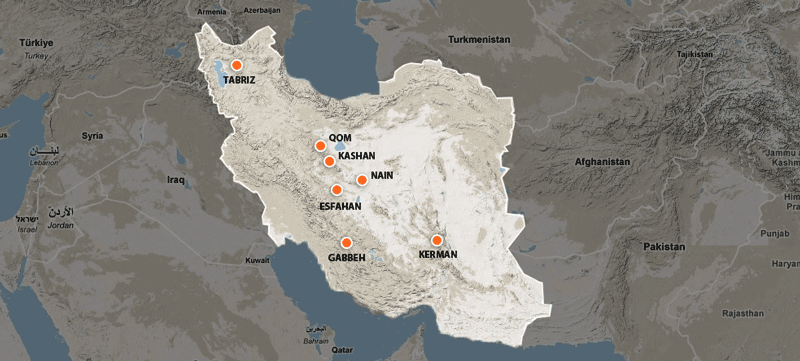Kerman:
Very detailed and colorful flower paterns characterize Kerman carpets. Fine wool pines on cotton provides ever lasting durability. The more traffic they sustain, the more beautiful they become.
Tabriz:
The city has played an important role in introducing Persian carpets to the world. The carpets are well distinguished for their brilliant combinaison of colors, which even enable them to create shadows. The piles are usually wool (combine with silk) on either cotton or silk threads.
Esfahan:
From the sixteenth century, the ancient city has been a production center for magnificent carpets. The deep colors of fine wool piles (combine with silk) and designs which challenge the imagination.
Qom:
The most famous of silk carpets. Soft and elegant textures make you wonder how an artist could create such beauty.
Nain:
Though historically a new competitor in carpet market, it has made some reputation around the world. Typically Nain carpets are the least colorful type of Persian carpets. Easily match to any kind of atmosphere or furniture. The material is usually wool (combine with silk) for piles on cotton threads.
Gabbeh:
Bright colors, simplified designs and 100% wool material. Appropriate for villas, children and modern rooms.
Kilims:
Composed of woven threads without piles. Thin, mostly reversable floor mats. Available in various casual colors and designs, which can also be utilised as wall tapestries.
Kashan:
In the Safavi period, numerous high quality carpets were made in Kashan which is a well established silk rug industry city since ancient times.
Local Wool:
A selection of carpets made of wool.
Handicrafts:
Persian handicrafts, are a course of industry in which all parts of product is made by hand and is formed, based on each areas, culture, philosophy talent and art. since there are numerous origins,creating handicrafts.there is a very wide range of products. Ceramics, glass, metal related, wood related, Enamels hand woven material are some samples.
Iran & Cities:






















